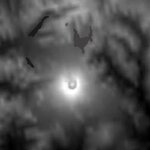mwilson914
Well-known member
To start this thread out, yes, this pertains to my secret project that keeps getting serious delays. I'm modeling the Snoqualmie Valley, or I want to anyhow. In the mean time, I'm experimenting.
I'm going to start this thread out with some screenshots and show you that it is possible to add terrain to Realflight...sort of.
The complexities are extreme because the terrain needs to be collidable everywhere there is land. This means the landscape no matter the size needs to be under 8,000 polys. Ugh! It's entirely possible and I'll show you how later on. It's entirely possible to have your very own created terrain the size of Sierra Nevada in Realflight AND be high res if you want it to be. However, you'll have to create it as seperate objects which line up like a puzzle.
For now, these are screenshots of Mt. St. Helens. It's made by using the DISPLACE modifier in 3DS Max using a black and white height map the same size as the RGB .tga to color the landscape. This is a single AP object that is 70,000x70,000 feet in size.
I'm going to start this thread out with some screenshots and show you that it is possible to add terrain to Realflight...sort of.
The complexities are extreme because the terrain needs to be collidable everywhere there is land. This means the landscape no matter the size needs to be under 8,000 polys. Ugh! It's entirely possible and I'll show you how later on. It's entirely possible to have your very own created terrain the size of Sierra Nevada in Realflight AND be high res if you want it to be. However, you'll have to create it as seperate objects which line up like a puzzle.
For now, these are screenshots of Mt. St. Helens. It's made by using the DISPLACE modifier in 3DS Max using a black and white height map the same size as the RGB .tga to color the landscape. This is a single AP object that is 70,000x70,000 feet in size.










